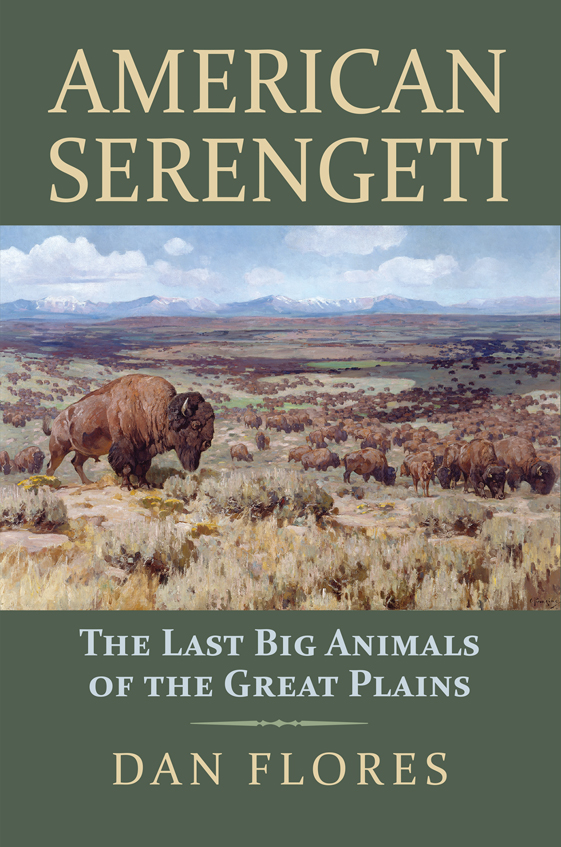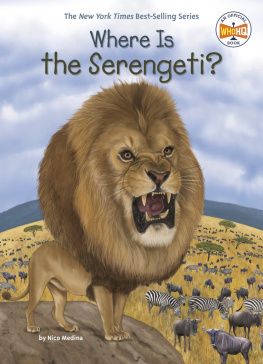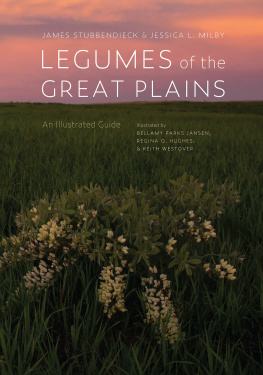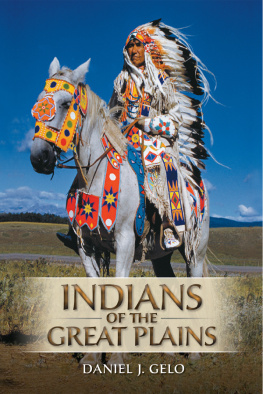Dan Flores - American Serengeti: The Last Big Animals of the Great Plains
Here you can read online Dan Flores - American Serengeti: The Last Big Animals of the Great Plains full text of the book (entire story) in english for free. Download pdf and epub, get meaning, cover and reviews about this ebook. year: 2016, genre: History. Description of the work, (preface) as well as reviews are available. Best literature library LitArk.com created for fans of good reading and offers a wide selection of genres:
Romance novel
Science fiction
Adventure
Detective
Science
History
Home and family
Prose
Art
Politics
Computer
Non-fiction
Religion
Business
Children
Humor
Choose a favorite category and find really read worthwhile books. Enjoy immersion in the world of imagination, feel the emotions of the characters or learn something new for yourself, make an fascinating discovery.

- Book:American Serengeti: The Last Big Animals of the Great Plains
- Author:
- Genre:
- Year:2016
- Rating:5 / 5
- Favourites:Add to favourites
- Your mark:
- 100
- 1
- 2
- 3
- 4
- 5
American Serengeti: The Last Big Animals of the Great Plains: summary, description and annotation
We offer to read an annotation, description, summary or preface (depends on what the author of the book "American Serengeti: The Last Big Animals of the Great Plains" wrote himself). If you haven't found the necessary information about the book — write in the comments, we will try to find it.
Dan Flores: author's other books
Who wrote American Serengeti: The Last Big Animals of the Great Plains? Find out the surname, the name of the author of the book and a list of all author's works by series.
American Serengeti: The Last Big Animals of the Great Plains — read online for free the complete book (whole text) full work
Below is the text of the book, divided by pages. System saving the place of the last page read, allows you to conveniently read the book "American Serengeti: The Last Big Animals of the Great Plains" online for free, without having to search again every time where you left off. Put a bookmark, and you can go to the page where you finished reading at any time.
Font size:
Interval:
Bookmark:

AMERICAN
SERENGETI
American Serengeti
THE LAST BIG ANIMALS OF
THE GREAT PLAINS Dan Flores
 UNIVERSITY PRESS OF KANSAS
UNIVERSITY PRESS OF KANSAS
2016 by the University Press of Kansas
All rights reserved
Portions of some of the chapters in American Serengeti have appeared in print in earlier and usually briefer versions. A version of chapter 1 appeared in The Magazine of History in 2013, a much-abbreviated take on chapter 2 in Wild West in 2015, and a treatment of chapter 3 in Wild West in 2013. An initial version of chapter 4 was in Montana: The Magazine of Western History in 2008. Significantly different and early grappling with the topics of chapters 5 and 7 here were in Dan Flores, The Natural West (2002) and Horizontal Yellow (1999), which provide some of the passages in these chapters. The same is true of chapter 8, which in places resembles an essay that was in Sherry Smith, ed., The Future of the Southern Plains (2003).
Published by the University Press of Kansas (Lawrence, Kansas 66045), which was organized by the Kansas Board of Regents and is operated and funded by Emporia State University, Fort Hays State University, Kansas State University, Pittsburg State University, the University of Kansas, and Wichita State University
Library of Congress Cataloging-in-Publication Data
Names: Flores, Dan L. (Dan Louie), 1948
Title: American Serengeti : the last big animals of the Great Plains / Dan Flores.
Description: Lawrence, Kansas : University Press of Kansas, 2016. | Includes bibliographical references and index.
Identifiers: LCCN 2015049990
ISBN 9780700622276 (hardback : alkaline paper)
ISBN 9780700622283 (ebook)
Subjects: LCSH: AnimalsGreat PlainsHistory. | HerbivoresGreat PlainsHistory. | Predatory animalsGreat PlainsHistory. | Natural historyGreat Plains. | Human-animal relationshipsGreat PlainsHistory. | NatureEffect of human beings onGreat PlainsHistory. | Environmental degradationGreat PlainsHistory. | Wildlife conservationGreat PlainsHistory. | Great PlainsHistory. | Great PlainsEnvironmental conditions. | BISAC: NATURE / Endangered Species. | NATURE / Animals / Wolves. | NATURE / Animals / Bears.
Classification: LCC QL155 .F55 2016 | DDC 591.50978dc23
LC record available at http://lccn.loc.gov/2015049990.
British Library Cataloguing-in-Publication Data is available.
Printed in the United States of America
10 9 8 7 6 5 4 3 2 1
The paper used in this publication is recycled and contains 30 percent postconsumer waste. It is acid free and meets the minimum requirements of the American National Standard for Permanence of Paper for Printed Library Materials z39.481992.
For Sara
AMERICAN
SERENGETI
AMERICAN SERENGETI
In the summer of 1843, four years after dazzling the world by completing a gigantic book that presented 435 American birds gloriously painted life size, the now world-famous artist John James Audubon was traveling up the Missouri River for an ambitious new project. An American raconteur, Audubon had just done a book tour of Europe dressed in buckskins, his hair cascading about his shoulders. Now he and his sons, Victor and John Woodhouse, had resolved to portray the continents mammals in the same manner that Audubon had done with its birds. Because the genius behind The Birds of America was intimate, first-hand observation of his subjects in their natural state, Audubon knew he could not produce a grand book on mammals with paintings done from specimens. So it was authenticity that brought one of worlds premier nature artists to the American Great Plains aboard the steam vessel Omega .
Here was a man who had spent almost his entire life in the wilds of America, closely observing nature, contemplating its moods, beauty, and meaning. He had read the great books on the West, including Lewis and Clarks account from three decades before, and fellow artist George Catlins much more recent book, which irked Audubon and aroused his jealousy. Yet he was in no way prepared for what unfolded in front of them as the Omega made its way past the ruins of the Mandan and Arikara villages, destroyed by smallpox six years earlier, and chugged up the narrowing river, bound for Fort Union at the confluence of the Yellowstone and the Missouri, in the heart of the wild American Great Plains.
It was the animals that stunned him. Audubon had spent his life surrounded by wild creatures, but this was something different. Watching the country unwind in front of them from the prow of their vessel, the plains almost appeared to vibrate with life, so many animals of so many different kinds that the renowned bird painter simply could not believe what his eyes were seeing. In one stretch, two weeks downstream from Fort Union near the eastern border of todays Montana, this condensation from the journal he was keepingIve excised some of his other commentarylets us into his mind to experience what he felt about this American Eden:
We passed some beautiful scenery and almost opposite had the pleasure of seeing five Mountain Rams, or Bighorns, on the summit of a hill. We saw what we supposed to be three Grizzly Bears, but could not be sure. We saw a Wolf attempting to climb a very steep bank of clay. On the opposite shore another Wolf was lying down on a sand-bar, like a dog. I forgot to say that last evening we saw a large herd of Buffaloes, with many calves among them; they were grazing quietly on a fine bit of prairie. They stared, and then started at a handsome canter producing a beautiful picturesque view. We have seen many Elks swimming the river. These animals are abundant beyond belief hereabouts. If ever there was a country where Wolves are surpassingly abundant, it is the one we now are in.
In fact, Audubon wrote, it is impossible to describe or even conceive the vast multitudes of these animals that exist even now, and feed on these ocean-like prairies. He closed a letter to his wife that summer with this sentence: My head is actually swimming with excitement, and I cannot write any more.
In the phrase of the nineteenth century, Audubon had gone west and seen the elephant. What one of the countrys premier artists was privileged to witness, and in truth what had him in such a state of euphoria, was no less than the American version of the wildlife-rich Serengeti Plain of East Africa. Not even two centuries back in the continents past, it was one of the natural spectacles of the world, equaled only by places like the Serengeti, the Masai Mara, or the veld of South Africa. These landscapes were all similar, immense open grasslands extending to the curve of the earth, which was part of the appeal. But it was not just the settings, not only the vast opalescent distances, the blue pyramidal forms of mountains on distant horizons, the intersecting planes of horizontal, yellowed grasslands. It was presence of so much sheer life, the marvelous aggregations of big grazers and their predators, all of which you could clearly see interacting in the clean light and vast spaces of all these landscapes, including the interior grasslands of North America.
For millions of years before Audubon stood gobsmacked on the deck of the Omega , the American Great Plains had been the setting of giants. In 1855 Ferdinand Hayden discovered the first dinosaur bones from an American site very near Fort Benton, upstream of where Audubon had been in a swoon about nineteenth-century plains wildlife the decade before. The next year, Joseph Leidy named five new dinosaurs from the confluence of the Missouri and Judiths River, only 150 miles up the Missouri from Audubons epiphanies. Edwin Cope, one of Leidys students, came to Judiths Landing in 1876, followed by the celebrated Yale paleontologist Othniel Marsh in 1880. Barnum Brown of the American Museum of Natural History found the first T-Rex unearthed from the plains in the early twentieth century. The Great Plains, especially its exposed badlands, became crucial locales for the fossil discoveries that took evolution from theory to fact, and have remained the primary target of the modern dinosaur hunt, at least in the United States and Canada, today.
Font size:
Interval:
Bookmark:
Similar books «American Serengeti: The Last Big Animals of the Great Plains»
Look at similar books to American Serengeti: The Last Big Animals of the Great Plains. We have selected literature similar in name and meaning in the hope of providing readers with more options to find new, interesting, not yet read works.
Discussion, reviews of the book American Serengeti: The Last Big Animals of the Great Plains and just readers' own opinions. Leave your comments, write what you think about the work, its meaning or the main characters. Specify what exactly you liked and what you didn't like, and why you think so.









